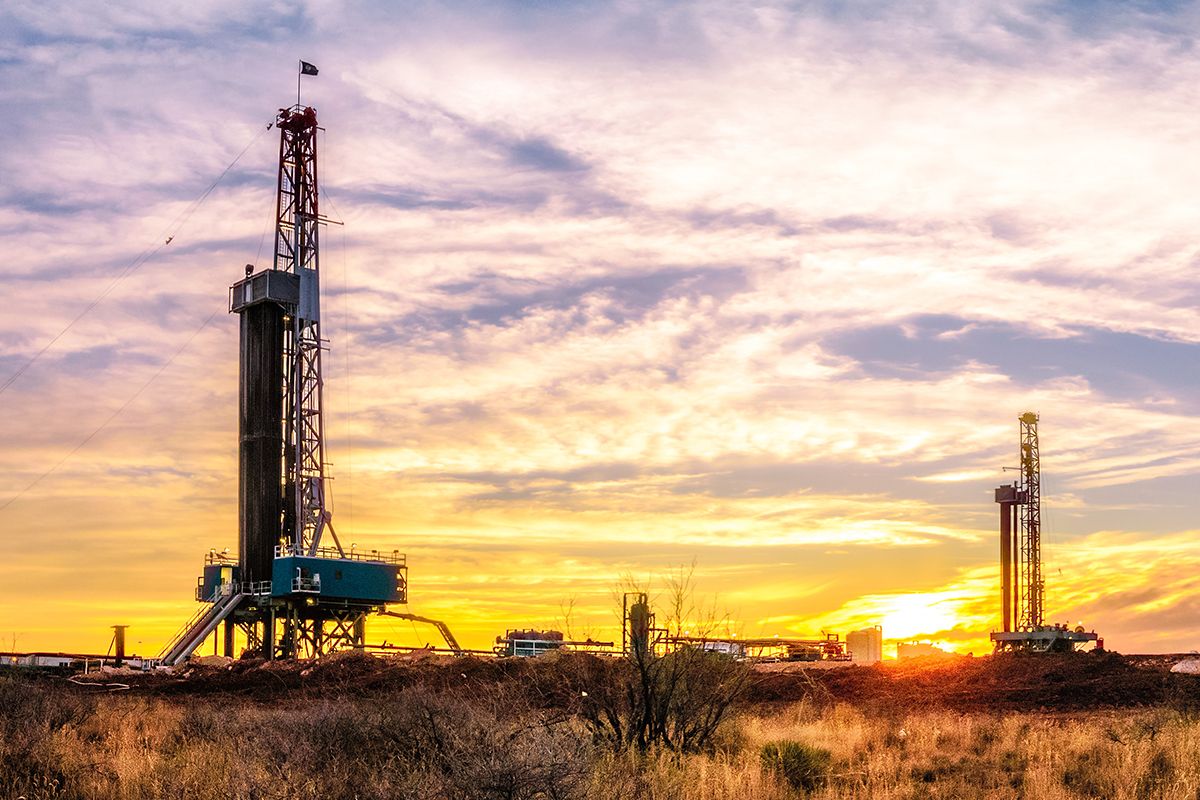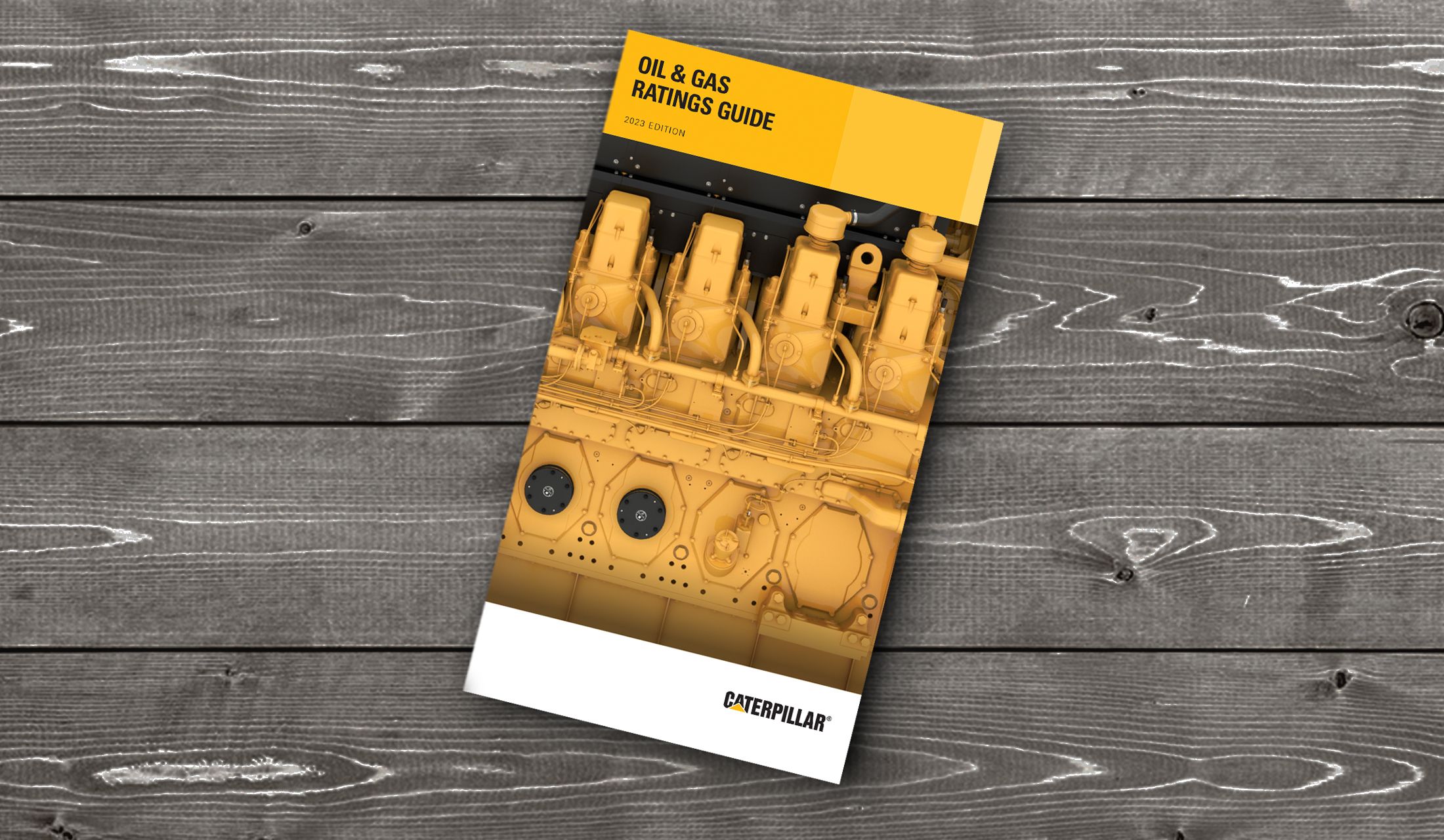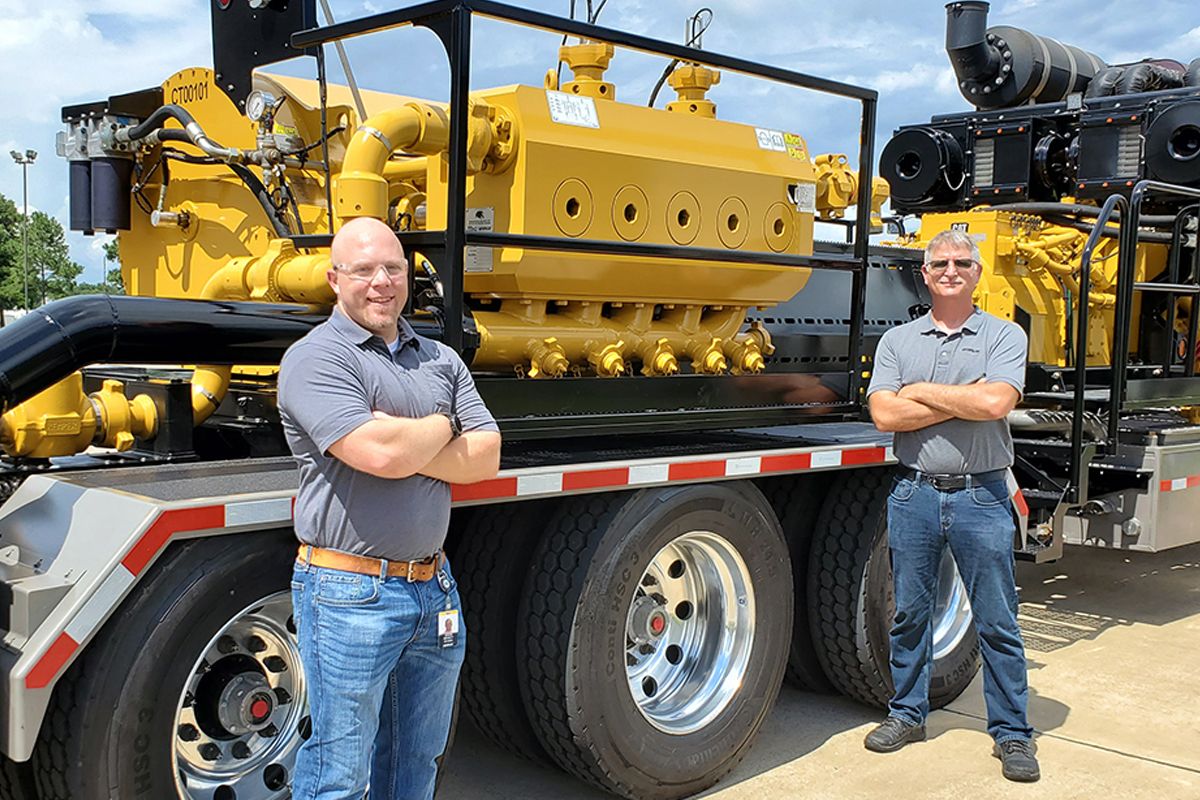If you already have an existing account with another Cat App, you can use the same account to sign in here.
One Account. All of Cat.
Your Caterpillar account is the single account you use to log in to select services and applications we offer. Shop for parts and machines online, manage your fleet, go mobile, and more.
Account Information
Site Settings
Security
AL HUNT REMINISCES ABOUT 30 YEARS OF THE G3600
If you purchased Cat® G3600 engines during the 1990s or 2000s, there’s a good chance Al Hunt was the man on site making sure they were set up to work right. A commissioning technician for former Cat dealer Darr Equipment (which sold the Cat equipment side of its business to HOLT CAT and Warren CAT in the early 2000s), Al stopped counting after visiting more than 100 gas compression sites across the U.S. and Mexico. He officially retired in 2009 but continues to share his expertise with both Caterpillar and gas compression operations nationwide.
During this 30th anniversary year of the G3600 platform, we sat down (virtually) with Al to talk about his memories of the engine’s early days and its evolution over time. Here are some of the highlights:
Caterpillar Oil & Gas: Do you remember the first time you saw the G3600?
Al: I remember the first diesel 3600 I saw. We went to Caterpillar’s engine plant in Mossville [Illinois] for a training class, and they had a 3612 running in a test cell. It was mind-boggling because Caterpillar had never had an engine that big. You could just stand there and feel the energy pulsing through the floor and up your legs. It was a different feeling to be around that much horsepower, probably around 3300, in a single engine.
Caterpillar Oil & Gas: What was customers’ first reaction to the G3600?
Al: Do you remember Jim Nabors? He played Gomer Pyle on TV and always said, “Well, golly!” That’s the one thing customers said a lot. They were excited. Most had a good feeling about Cat engines in the G3500 space, but this was brand new. They hadn’t seen anything like this coming out of Caterpillar. It was an eye-opener, and it didn’t take long for it to take off. We commissioned about 25 engines the first year total, and then the next year it doubled and was off and running.
Caterpillar Oil & Gas: Was there any skepticism?
Al: There’s always skepticism when you introduce something new. Customers will say, “Yeah, we’ve heard that before.” But the G3600 did everything Caterpillar said it would do and more. Powerful, good fuel economy, low maintenance. If you packaged it right and did routine maintenance, it would run and run. A G3600 typically runs about 8500 hours a year — there are less than 8800 hours in a year. The uptime is pretty unreal.
I remember a customer in East Texas that involved their technicians to some extent in purchase decisions. They asked three guys on site what they thought about switching to the G3600. Their feedback was, “We don’t know anything about these engines so don’t buy them.” Fortunately, better heads prevailed and they bought them. Three months later, I was on site and asked those techs what they thought now. They said, “We still don’t know much about them, but we love them.” They didn’t have to work on them all the time. The G3600’s uptime was head and shoulders above anything else.
“THERE’S THAT OLD SAYING ABOUT TIMEX WATCHES — THEY TAKE A LICKIN’ AND KEEP ON TICKIN’ — AND THE G3600 IS LIKE THAT. THEY’RE TOUGH AS NAILS, AND THEY’RE THE BEST ENGINES IN GAS COMPRESSION.”
Caterpillar Oil & Gas: What were the biggest improvements to the G3600 over the years?
Al: Number one was the ADEM™ A3 update. On the original ESS system, there were hundreds of connections and wires, and those wires would chafe and get loose and cause downtime. A3 got rid of a lot of wires and virtually all the screw terminals on the engine. The engine didn’t perform differently, but you didn’t have to babysit it with regard to electrical issues. Customers saw that as a great improvement in uptime with not much maintenance labor.
Number two was the switch to the TPS turbocharger. The old VTC turbo had a short life. It was a good performer, but its axial design meant it was very susceptible to deposit buildup. It would get unbalanced and fail. It was hard to get it to last more than a year. The TPS had a radial design like all the other Cat turbos, and when it was introduced, turbo life went from 8,000 or 9,000 hours to 30,000 hours.
Caterpillar Oil & Gas: What about the A4 upgrade — what did you think about that?
Al: I had retired when the A4 came out, but I was still doing some contract work for Caterpillar and field training for customers so I invited myself to see one of the first field-follow units. It’s a different animal than the A3. Customers had a lot of input into the engine, and emissions were very important. With the A3, we were down to about half a gram of NOx on most engines by then. The A4 was at half a gram at introduction, and before the first year was out it had a 0.3 gram rating. It has a NOx sensor that makes it easy for a technician to tune the engine to meet emissions permit levels. The A4 also has a much better appetite for hot fuels. It’ll burn pretty much anything that’s being processed in the field.
Caterpillar Oil & Gas: What’s your favorite thing about the G3600?
Al: Well, first, it’s a Cat. I bleed yellow. But beyond that, the fact that it’s so robust it’ll run even when it doesn’t get all the good maintenance it should get or all the good fuel it should get. There’s that old saying about Timex watches — they take a lickin’ and keep on tickin’ — and the G3600 is like that. It’s been a very dependable product for the gas patch. Sure, there have been some catastrophic failures, but only a handful compared to the nearly 6,000 or so engines that are out there running. They’re tough as nails, and they’re the best engines in gas compression.
Caterpillar Oil & Gas: What was your relationship like with Caterpillar as a dealer employee?
Al: I always had a good relationship with the engineering folks and product support people at Caterpillar. I actually worked for Louisiana Machinery on the earthmoving side for 25 years before I moved to Darr and the gas engine business. I knew the engineers, was in Peoria a lot and did a lot of field follows. I always considered myself as much a Cat employee as a dealer employee.
Caterpillar Oil & Gas: Any last words about the G3600?
Al: I’m glad you’re recognizing the longevity and success of this product. It’s been my bread and butter, my livelihood, and I bet most of the original engines I commissioned are still running. It was also a lot of fun and very rewarding to work with so many good people.
Big thanks to Al Hunt for sharing his memories — and for all his support of the G3600 over the past 30 years. We couldn’t have done it without him!
Related Articles
-
Q&A with G3600 Sweepstakes Winner Caleb Upchurch
Meet the April winner of our G3600 30th Anniversary Sweepstakes and find out about his experiences with “Wally” and other Cat® G3600 gas engines.
Learn More -
A Career Spent Alongside the G3600
When the G3600 debuted 30 years ago, Bobby Runnels was just starting out as a technician. See where three decades have taken him and this gas compression engine.
Learn More -
Early Days of the G3600
Just two years after its launch, the new Cat® G3600 engine platform was already making its mark. Check out the highlights from this internal status report.
Learn More -
30 Years of Milestones
Take a look at some of the key milestones in technology, entertainment and business that have taken place since the launch of the Cat® G3600 platform in 1991.
Learn More -
30 Years By The Numbers
Take a look at this infographic to see what 30 years of performance looks like for Cat® G3600 gas compression engines.
Learn More











